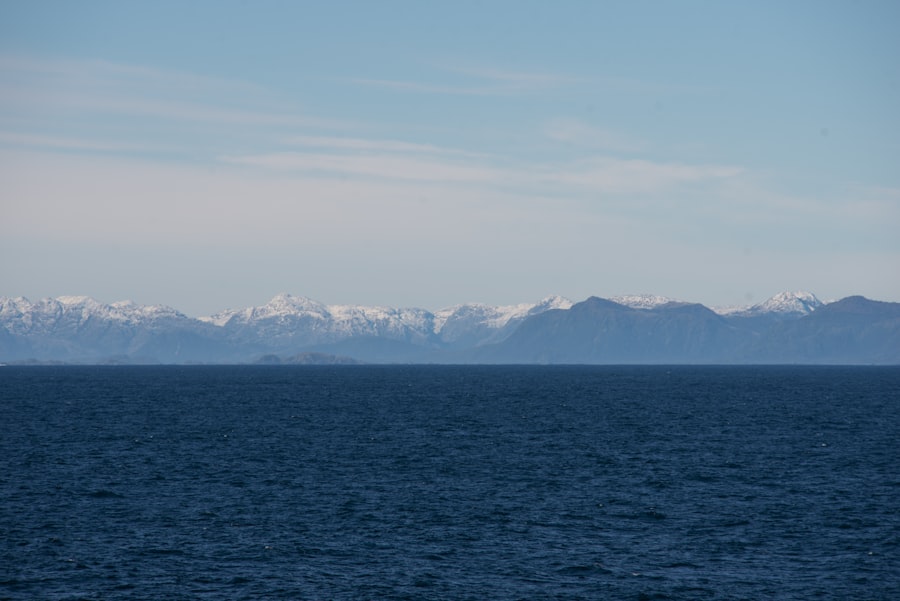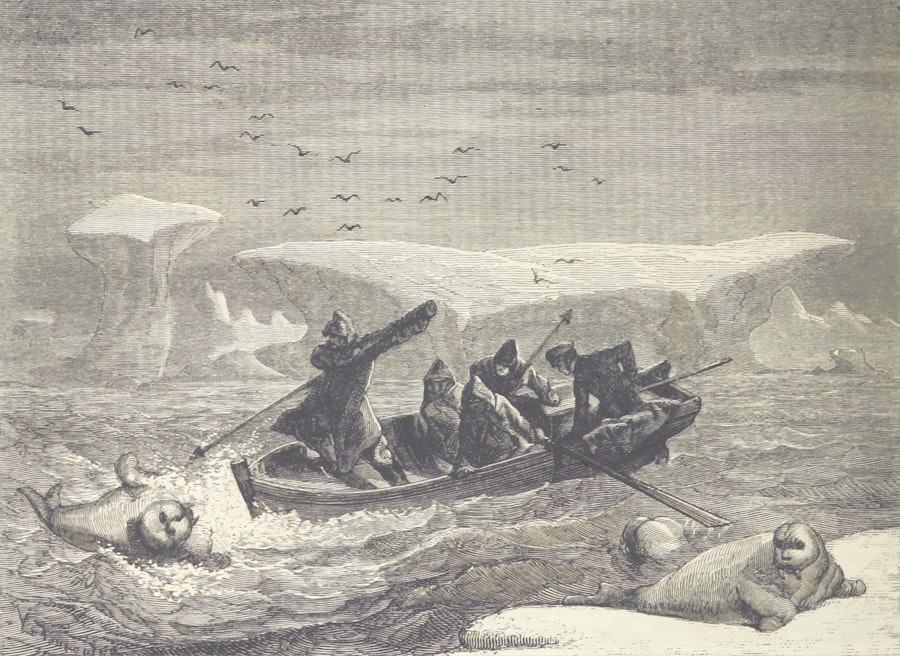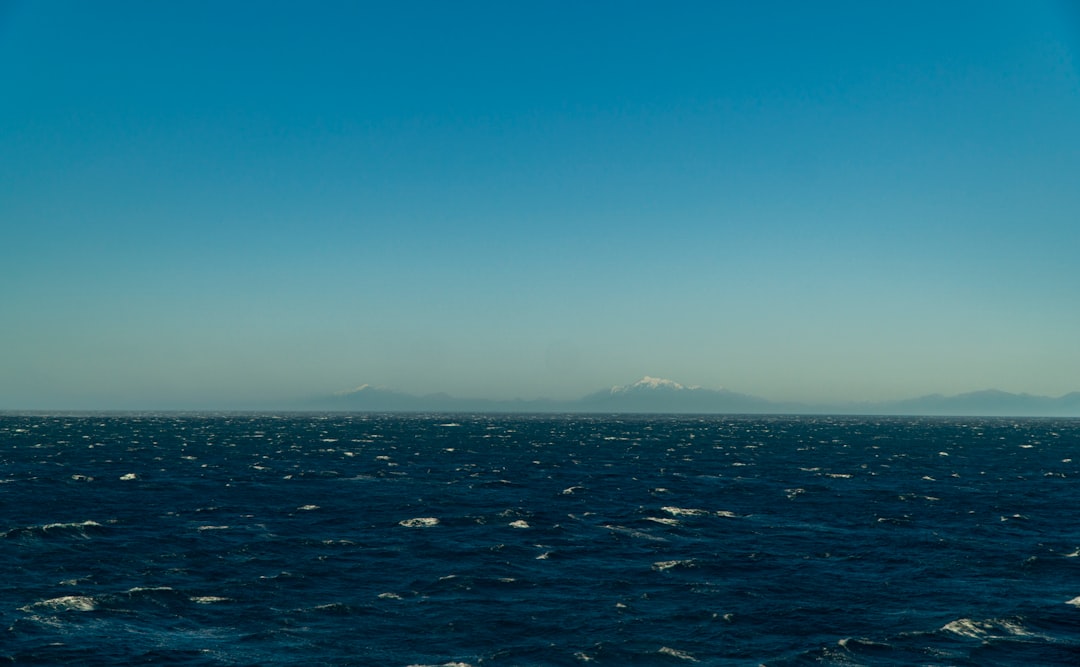The Drake Passage, a body of water situated between the southern tip of South America and Antarctica, is renowned for its tumultuous seas and unpredictable weather. Spanning approximately 600 kilometers (370 miles) in width, this passage serves as a critical maritime route for vessels traversing between the Atlantic and Pacific Oceans. Its significance extends beyond mere geography; it is a vital conduit for ocean currents and plays a crucial role in the global climate system.
The passage is named after the English explorer Sir Francis Drake, who was one of the first to navigate these treacherous waters in the late 16th century. However, it is also steeped in a rich history that predates Drake, with its waters having been both feared and revered by sailors for centuries. Navigating the Drake Passage is not for the faint of heart.
The region is notorious for its fierce storms and high waves, which can reach heights of up to 15 meters (49 feet). The confluence of the Atlantic and Pacific Oceans creates a unique environment where weather patterns can shift rapidly, often leaving mariners at the mercy of nature’s whims. Despite these challenges, the Drake Passage remains an essential route for shipping and exploration, drawing adventurers and researchers alike to its icy shores.
The passage’s allure lies not only in its daunting conditions but also in its breathtaking landscapes and rich biodiversity, making it a focal point for both maritime navigation and scientific inquiry.
Key Takeaways
- The Drake Passage is a treacherous body of water located between South America’s Cape Horn and the South Shetland Islands of Antarctica.
- Ferdinand Magellan’s historic voyage through the passage in 1520 marked the first successful European navigation of the treacherous waters.
- Navigating the Drake Passage presents numerous challenges, including strong winds, rough seas, and icebergs, making it one of the most dangerous sea routes in the world.
- Despite early failed attempts to navigate the passage, Magellan’s successful journey paved the way for future explorers and had a lasting impact on global exploration.
- Today, the Drake Passage remains an important route for scientific research, particularly in the fields of oceanography, climatology, and marine biology.
The Legacy of Ferdinand Magellan
Ferdinand Magellan, a Portuguese explorer sailing under the Spanish flag, is often credited with being the first to successfully navigate the strait that now bears his name, linking the Atlantic and Pacific Oceans. His expedition, which began in 1519, was a monumental undertaking that sought to find a westward route to the Spice Islands. Magellan’s journey through the Drake Passage was fraught with peril, yet it marked a significant milestone in the Age of Exploration.
His determination to chart unknown waters not only expanded geographical knowledge but also paved the way for future explorers to follow in his wake. Magellan’s legacy extends beyond his navigational achievements; he embodied the spirit of exploration during a time when the world was largely uncharted. His voyage demonstrated the potential for global trade routes that could connect distant lands, ultimately transforming economies and cultures.
The successful navigation of the Drake Passage was a testament to human ingenuity and resilience in the face of adversity. Magellan’s journey inspired countless others to embark on their own expeditions, igniting a passion for discovery that would shape the course of history.
The Challenges of Navigating the Drake Passage

Navigating the Drake Passage presents numerous challenges that have tested even the most seasoned mariners.
Sailors must contend with sudden storms that can arise without warning, bringing fierce winds and towering waves that can capsize vessels.
The passage’s unique geography contributes to these conditions; as ocean currents collide, they create turbulent waters that can be both exhilarating and terrifying. For those attempting to navigate this passage, understanding these challenges is crucial for ensuring safety and success. In addition to weather-related obstacles, navigators must also be aware of the passage’s icy waters and shifting icebergs.
The presence of ice poses a significant risk to ships, particularly smaller vessels that may not be equipped to handle such hazards. Mariners must remain vigilant and adaptable, constantly monitoring their surroundings to avoid collisions with drifting ice or submerged hazards. These challenges require not only skillful navigation but also a deep respect for the power of nature, as even the most experienced sailors can find themselves at the mercy of the Drake Passage’s formidable forces.
Early Attempts to Navigate the Passage
| Explorer | Year | Outcome |
|---|---|---|
| John Cabot | 1497 | Reached Newfoundland, Canada |
| Henry Hudson | 1607 | Explored Hudson Bay |
| James Cook | 1778 | Explored Bering Strait |
Before Magellan’s historic voyage, several explorers attempted to navigate the treacherous waters of the Drake Passage, each facing their own set of challenges and setbacks. The early 16th century was a time of intense exploration, with European powers vying for dominance over new trade routes and territories. However, many of these early attempts were met with failure due to a lack of accurate maps and an understanding of the region’s unpredictable conditions.
Explorers like Juan Díaz de Solís and Sebastián Cabot ventured into these waters but ultimately turned back, deterred by the harsh realities of navigation in such an unforgiving environment. These early endeavors laid the groundwork for future exploration by highlighting both the potential rewards and inherent dangers of navigating the Drake Passage. They served as cautionary tales for those who would follow in their footsteps, emphasizing the need for careful planning and preparation.
Despite their failures, these explorers contributed valuable knowledge about the region, paving the way for Magellan’s eventual success. Their experiences underscored the importance of perseverance in exploration, as each setback brought humanity closer to understanding this enigmatic passage.
Magellan’s Historic Voyage
Magellan’s historic voyage through the Drake Passage began on September 20, 1519, when he set sail from Spain with a fleet of five ships. His goal was ambitious: to find a westward route to the Spice Islands by navigating through uncharted waters. After months of sailing along the coast of South America, Magellan encountered the formidable Drake Passage in late 1520.
Faced with fierce storms and treacherous seas, he demonstrated remarkable leadership and resilience as he guided his fleet through this perilous stretch of water. The successful navigation of the Drake Passage was a turning point in Magellan’s expedition. It allowed him to emerge into the vast expanse of the Pacific Ocean, which he famously named “Mar del Sur” or “South Sea.” This achievement not only fulfilled his quest for a new trade route but also marked a significant moment in maritime history.
Magellan’s journey through these turbulent waters showcased his navigational prowess and determination, solidifying his place as one of history’s great explorers. Tragically, Magellan would not live to see the full impact of his voyage; he was killed in the Philippines in 1521, but his expedition continued under the command of Juan Sebastián Elcano, ultimately completing its circumnavigation of the globe.
Impact of Magellan’s Expedition on Exploration

The impact of Magellan’s expedition on exploration cannot be overstated. His successful navigation through the Drake Passage opened up new possibilities for maritime trade and exploration that had previously been unimaginable. By demonstrating that it was possible to sail from Europe to Asia by way of the Americas, Magellan inspired future generations of explorers to seek out new routes and territories.
His journey fundamentally altered perceptions of geography and trade, leading to an era characterized by increased global interaction. Moreover, Magellan’s expedition provided invaluable insights into navigation techniques and shipbuilding practices that would influence future voyages. The challenges faced during his journey prompted advancements in maritime technology and cartography, allowing subsequent explorers to navigate more safely and efficiently through treacherous waters like those found in the Drake Passage.
The legacy of Magellan’s expedition is evident in how it reshaped global trade networks and fostered cultural exchanges between distant lands, ultimately contributing to an interconnected world.
Modern Navigation of the Drake Passage
In contemporary times, navigating the Drake Passage has become more manageable due to advancements in technology and navigation techniques. Modern vessels are equipped with sophisticated instruments that allow sailors to monitor weather patterns and ocean currents with unprecedented accuracy. This technological progress has significantly improved safety for those traversing these challenging waters, enabling mariners to make informed decisions about their routes and timing.
Despite these advancements, navigating the Drake Passage still requires skill and experience. Mariners must remain vigilant in monitoring changing conditions while being prepared for unexpected challenges that may arise during their journey.
As interest in polar exploration grows, understanding how to navigate this unique waterway remains essential for ensuring safe passage through one of the world’s most formidable maritime environments.
The Importance of the Passage for Scientific Research
The Drake Passage plays a crucial role in scientific research, particularly concerning climate change and marine biology. Its unique position as a meeting point between two major oceans makes it an ideal location for studying ocean currents and their impact on global climate patterns. Researchers have long recognized that understanding these dynamics is essential for predicting future climate changes and their effects on ecosystems worldwide.
Additionally, the rich biodiversity found within the waters of the Drake Passage provides valuable opportunities for marine research. Scientists study various species inhabiting this region, including krill, seals, and numerous seabird species that rely on these waters for sustenance. The passage serves as an important habitat for many marine organisms that are integral to understanding broader ecological systems.
As climate change continues to threaten marine environments globally, ongoing research in this area is vital for developing effective conservation strategies.
Environmental Concerns in the Drake Passage
Despite its significance as a natural wonder and research hub, environmental concerns loom over the Drake Passage due to increasing human activity in the region. The rise in tourism and commercial shipping has raised alarms about potential ecological impacts on fragile marine ecosystems. Oil spills, waste disposal from vessels, and disturbances caused by increased traffic pose significant threats to wildlife populations that inhabit these waters.
Moreover, climate change exacerbates existing environmental challenges faced by this region. Melting ice caps contribute to rising sea levels while altering oceanic currents that affect marine life distribution patterns. As researchers continue to study these changes, it becomes increasingly clear that protecting this vital passage is essential not only for preserving its unique ecosystems but also for safeguarding global climate stability.
Tourism in the Drake Passage
Tourism has become an increasingly popular activity in the Drake Passage as adventurers seek out its breathtaking landscapes and unique wildlife experiences. Cruise ships now regularly traverse these waters, offering travelers opportunities to witness stunning glaciers, icebergs, and diverse marine life up close. This surge in tourism has brought economic benefits to local communities while raising awareness about environmental conservation efforts.
However, increased tourist activity also raises concerns regarding sustainability and environmental impact within this delicate ecosystem. Tour operators must prioritize responsible practices that minimize disturbances to wildlife habitats while educating travelers about preserving natural resources during their visits. Striking a balance between promoting tourism and protecting fragile ecosystems remains crucial as interest in exploring this remarkable region continues to grow.
The Enduring Legacy of Magellan’s Journey
The enduring legacy of Ferdinand Magellan’s journey through the Drake Passage is evident not only in historical accounts but also in contemporary exploration efforts today. His pioneering spirit paved the way for future generations seeking adventure across uncharted waters while expanding humanity’s understanding of geography and trade routes worldwide. As modern navigators continue to traverse these challenging seas equipped with advanced technology, they carry forward Magellan’s legacy—one defined by courage, curiosity, and an unwavering desire to explore.
In reflecting upon both past achievements and present challenges faced within this remarkable passageway between continents lies an opportunity for continued growth—one rooted firmly within our collective responsibility towards environmental stewardship amidst increasing human activity within fragile ecosystems like those found throughout this iconic region today.
The Drake Passage, a significant body of water connecting the Atlantic and Pacific Oceans, is often associated with the historic voyages of explorers like Ferdinand Magellan. For those interested in learning more about the geographical and historical significance of this region, a related article can be found on MyGeoQuest. This article delves into the challenges faced by early explorers navigating these treacherous waters and the impact of their discoveries on global trade routes. To explore this topic further, you can visit the article by clicking on this link: Drake Passage and Magellan’s Voyages.
WATCH NOW! Drake Passage: Earth’s Deadliest Waters Revealed
FAQs
What is the Drake Passage?
The Drake Passage is the body of water between the southern tip of South America (Cape Horn) and the South Shetland Islands of Antarctica. It connects the southwestern part of the Atlantic Ocean with the southeastern part of the Pacific Ocean.
Why is the Drake Passage significant?
The Drake Passage is known for its rough seas and strong winds, making it one of the most challenging and unpredictable bodies of water to navigate. It is also a major gateway for the movement of ocean currents and marine life between the Atlantic and Pacific Oceans.
What is the Magellan Strait?
The Magellan Strait, also known as the Strait of Magellan, is a navigable sea route located at the southern tip of South America. It connects the Atlantic and Pacific Oceans, providing a crucial passage for maritime trade and travel.
How does the Drake Passage relate to the Magellan Strait?
The Drake Passage and the Magellan Strait are both important maritime routes that connect the Atlantic and Pacific Oceans. While the Drake Passage is located further south and is known for its rough seas, the Magellan Strait offers a more sheltered and historically significant passage for ships.
What are the challenges of navigating the Drake Passage and the Magellan Strait?
Both the Drake Passage and the Magellan Strait present challenges such as strong winds, unpredictable weather, and potential ice hazards. Navigating these passages requires careful planning, experienced crew, and sturdy vessels capable of withstanding harsh conditions.
